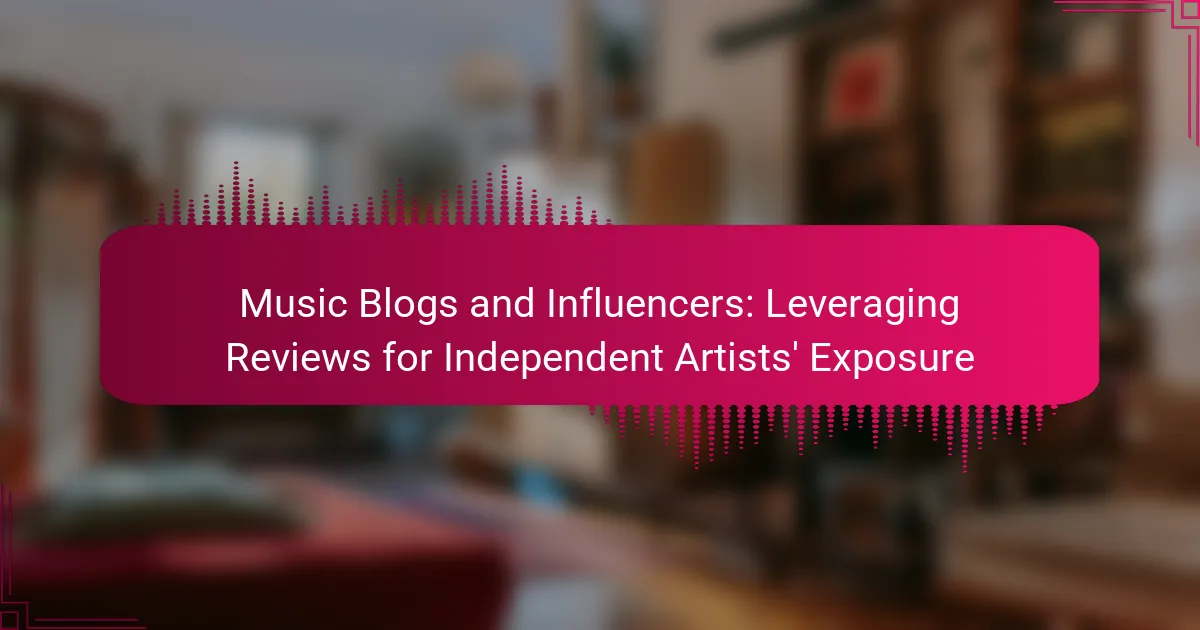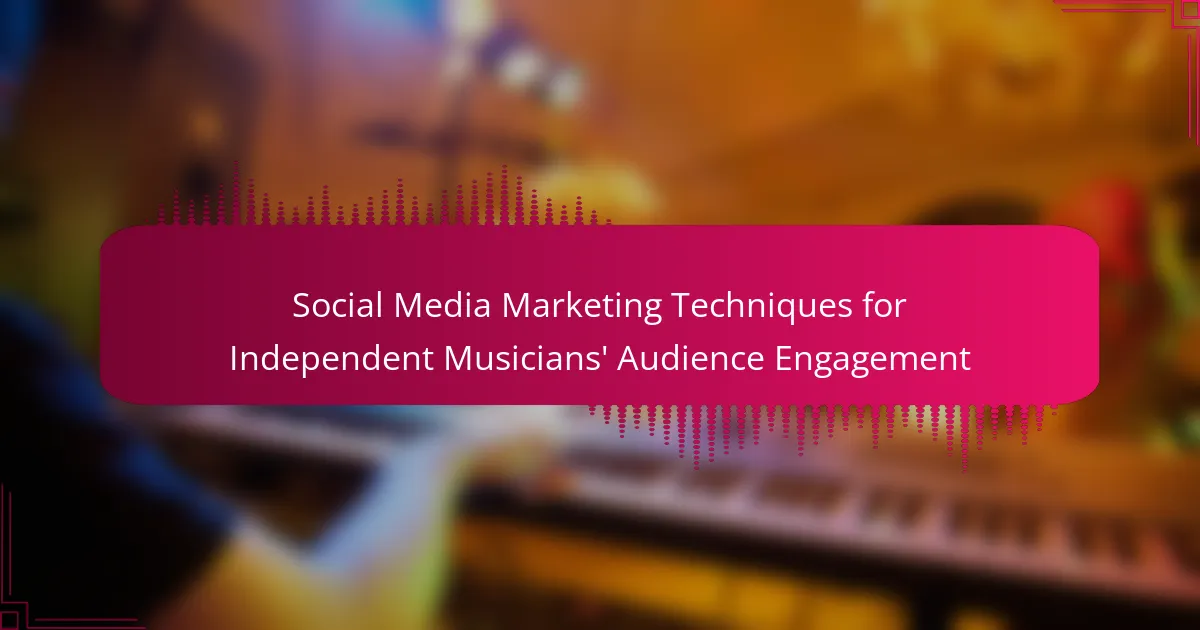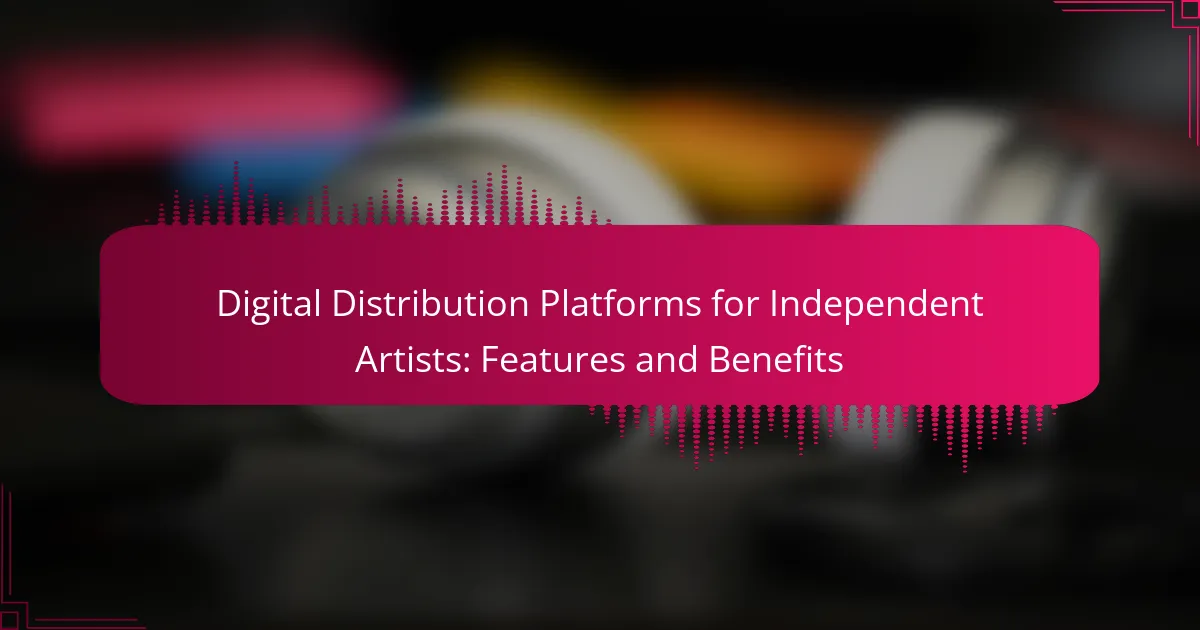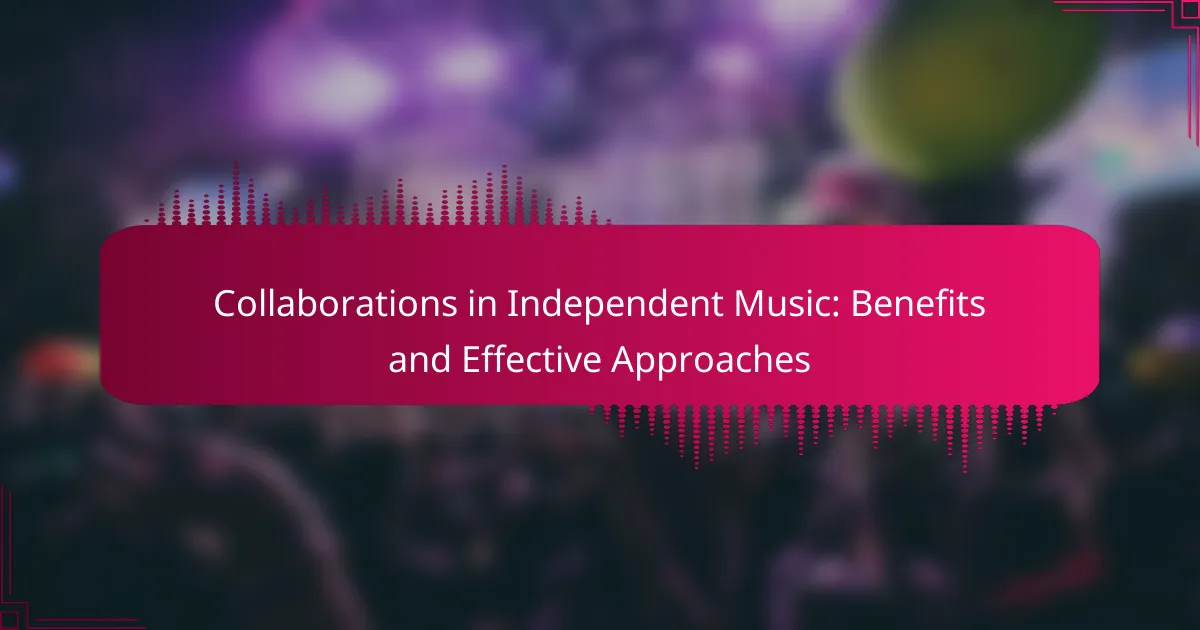Emerging artists can unlock significant revenue through various music licensing opportunities. Key avenues include sync licensing for visual media, performance rights from public plays, and digital streaming royalties. Understanding these options, along with the potential of merchandise and commercial use licensing, can enhance their income streams. Additionally, building industry connections and effective promotion strategies are crucial for success in this competitive landscape.
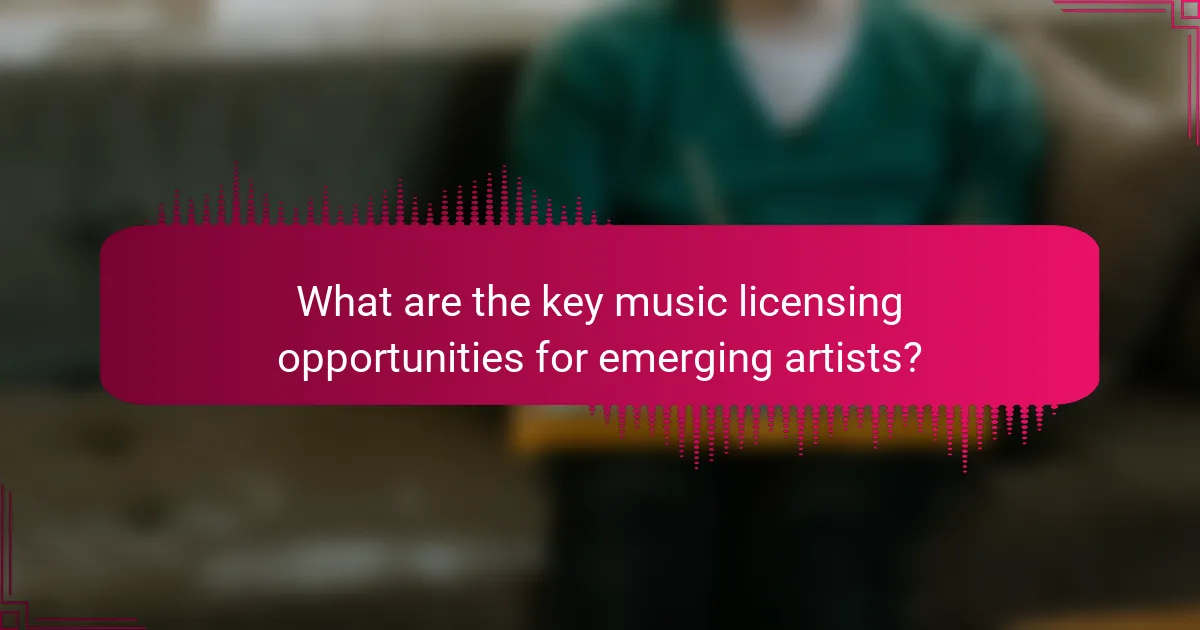
What are the key music licensing opportunities for emerging artists?
Emerging artists have several key music licensing opportunities that can generate revenue. These include sync licensing for film and television, performance rights through organizations like ASCAP or BMI, and digital streaming royalties from platforms such as Spotify.
| Licensing Type | Description | Revenue Potential |
|——————————-|————————————————–|—————————-|
| Sync Licensing | Licensing music for use in visual media | High, varies by project |
| Performance Rights | Earnings from public performances of music | Steady, based on plays |
| Digital Streaming Royalties | Earnings from streams on digital platforms | Increasing, based on plays |
| Mechanical Royalties | Earnings from physical sales and downloads | Moderate, based on sales |
| Licensing for Commercial Use | Music used in advertisements and promotions | High, varies by contract |
| Merchandise Licensing | Licensing music for branded products | Variable, based on sales |
These avenues provide emerging artists with diverse revenue streams while expanding their audience reach.
How does music licensing benefit emerging artists?
Music licensing significantly benefits emerging artists by providing revenue opportunities and exposure. Licensing allows artists to earn income through various platforms like film, TV, and advertising. This exposure can lead to increased fan engagement and further opportunities in the music industry. Additionally, music licensing helps in establishing a professional reputation, which is crucial for career growth. Emerging artists can leverage these benefits to build a sustainable career while reaching wider audiences.
Which platforms offer music licensing for new talent?
Several platforms offer music licensing for new talent, including Musicbed, Artlist, Epidemic Sound, and AudioJungle. These platforms cater specifically to emerging artists, providing opportunities to monetize their music through licensing deals.
Musicbed allows artists to connect with filmmakers and content creators, while Artlist offers a subscription model for unlimited music downloads. Epidemic Sound focuses on providing high-quality tracks for creators, and AudioJungle operates on a pay-per-download basis. Each platform has unique attributes, such as revenue sharing models and audience reach, ensuring diverse opportunities for artists.
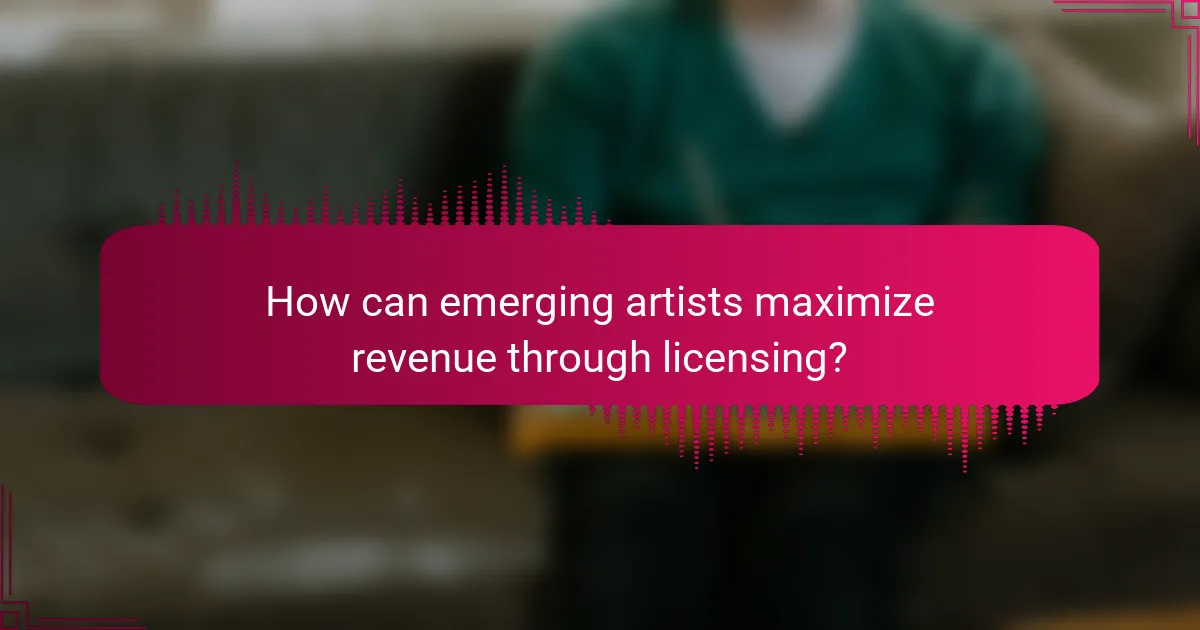
How can emerging artists maximize revenue through licensing?
Emerging artists can maximize revenue through licensing by exploring various opportunities such as sync licensing, performance rights, and mechanical licenses. Sync licensing allows artists to earn from having their music featured in films, TV shows, and commercials, often providing substantial payouts. Performance rights enable artists to collect royalties when their music is played in public venues or broadcasted. Mechanical licenses generate income from the reproduction of music on physical formats or digital downloads. By understanding these avenues and actively pursuing them, artists can significantly enhance their revenue potential.
What are the different revenue streams from music licensing?
Music licensing offers various revenue streams for emerging artists, including sync licensing, performance royalties, mechanical royalties, and digital streaming royalties. Each stream provides unique opportunities for income generation.
Sync licensing allows artists to earn money by having their music used in film, television, or advertisements. Performance royalties are generated when music is played in public venues or broadcasted, rewarding artists for their work. Mechanical royalties come from physical sales of music, such as CDs and vinyl, ensuring artists are compensated for copies sold. Digital streaming royalties are earned through platforms like Spotify and Apple Music, reflecting the growing trend of music consumption.
These revenue streams highlight the diverse ways emerging artists can monetize their music and expand their reach in the industry.
How do performance rights organizations support artists financially?
Performance rights organizations (PROs) support artists financially by collecting royalties on their behalf. These organizations monitor public performances of music and ensure artists receive compensation. PROs offer several revenue streams, including performance royalties, synchronization fees, and licensing agreements. For emerging artists, these opportunities can significantly enhance their income potential by providing access to a broader market. By joining a PRO, artists can focus on their creative work while benefitting from the financial support that comes from their music being played in public venues, broadcast media, and online platforms.
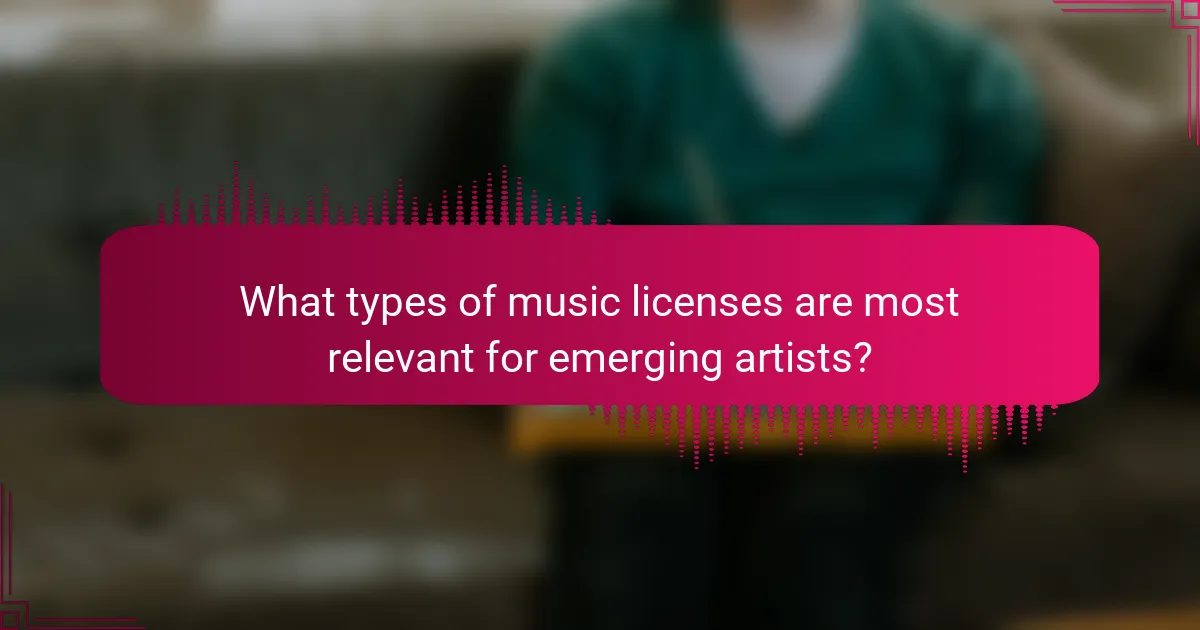
What types of music licenses are most relevant for emerging artists?
Emerging artists should consider synchronization licenses, mechanical licenses, and performance licenses for revenue opportunities. Synchronization licenses allow artists to earn from music used in films or commercials. Mechanical licenses generate income from physical and digital sales of recordings. Performance licenses enable revenue through live performances and streaming platforms. Each license type presents unique revenue potential and can significantly enhance an artist’s income stream.
What is the difference between synchronization and mechanical licenses?
Synchronization licenses allow the use of music in visual media, while mechanical licenses cover the reproduction of sound recordings. Emerging artists can leverage both types for revenue, with synchronization often yielding higher payouts due to its association with film and television. Mechanical licenses, however, are crucial for streaming and physical sales, providing steady income streams. Understanding these differences aids artists in maximizing their music licensing opportunities.
How do various media types influence licensing options?
Various media types significantly influence music licensing options by determining how and where music can be used. Different platforms, such as film, television, and streaming services, offer unique revenue potentials for emerging artists. For instance, licensing music for film can yield higher payouts due to its extensive reach and promotional opportunities. In contrast, streaming platforms may provide more frequent but lower revenue streams. Additionally, advertising uses can offer lucrative deals, especially for catchy or recognizable tracks. Understanding these distinctions helps artists navigate their licensing strategies effectively.

Which unique attributes should emerging artists consider in music licensing?
Emerging artists should consider unique attributes like genre versatility, audience engagement strategies, and brand alignment in music licensing. These factors can significantly enhance revenue potential and market reach. Genre versatility allows artists to tap into various licensing opportunities across multiple platforms. Audience engagement strategies, such as social media presence, can attract brands seeking authentic connections. Brand alignment ensures that the artist’s image resonates with potential sponsors, increasing the likelihood of successful collaborations.
How does an artist’s genre affect licensing opportunities?
An artist’s genre significantly influences their licensing opportunities. Different genres attract varying markets and demand, affecting potential revenue streams. For instance, genres like pop and hip-hop often yield higher licensing fees due to their mainstream appeal. In contrast, niche genres may have fewer opportunities but can still provide unique revenue through specialized placements. Understanding genre-specific trends helps emerging artists target suitable licensing avenues effectively.
What role does brand alignment play in licensing deals?
Brand alignment is crucial in licensing deals as it ensures synergy between the artist’s image and the brand’s values. This alignment enhances authenticity, attracting audiences and maximizing revenue potential. For emerging artists, a strong brand partnership can lead to increased visibility and opportunities for music licensing across various platforms. Brands seek artists whose style and message resonate with their target demographics, amplifying marketing efforts and creating mutually beneficial relationships.
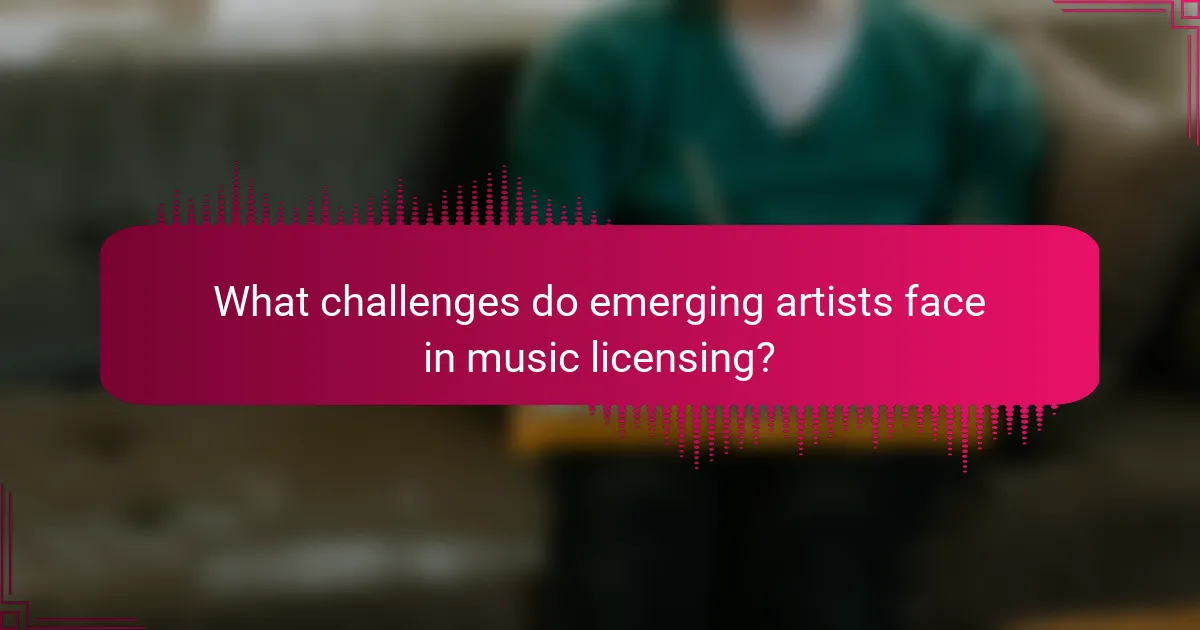
What challenges do emerging artists face in music licensing?
Emerging artists face significant challenges in music licensing, including limited industry connections, complex legal frameworks, and financial constraints. These obstacles hinder their ability to secure licensing deals, which are crucial for revenue generation. Additionally, the lack of awareness about licensing opportunities can prevent artists from effectively monetizing their work. Navigating these challenges requires strategic planning and often external support from music industry professionals.
How can legal complexities impact licensing for new artists?
Legal complexities can significantly hinder licensing opportunities for new artists. Navigating copyright laws, contract negotiations, and rights management can be daunting. Emerging artists often lack the resources to understand these intricacies, which can lead to missed revenue potential. For instance, failure to secure proper licenses for sampled music can result in costly legal disputes. Additionally, unique attributes of each artist’s work may complicate licensing agreements, making it essential for them to seek legal guidance. Understanding these complexities is crucial for maximizing their music licensing opportunities.
What common mistakes should artists avoid in licensing negotiations?
Artists should avoid common mistakes like underestimating their worth, neglecting contract details, and failing to seek legal advice. These errors can lead to unfavorable terms and lost revenue. Understanding the value of their music and ensuring clear agreements are crucial for successful licensing negotiations. Additionally, artists should be cautious of exclusivity clauses that limit future opportunities and ensure they retain rights to their work.

What are the trends shaping music licensing in 2025?
Emerging artists will see increased opportunities in music licensing by 2025 through diverse revenue streams and innovative platforms. The rise of digital content and social media is reshaping how music is licensed, allowing for greater access to sync licensing, performance rights, and streaming royalties.
Emerging artists can leverage platforms like TikTok and YouTube to gain exposure, leading to lucrative licensing deals. Additionally, collaborations with brands for advertising campaigns are becoming more common, creating unique revenue opportunities.
The trend toward personalized music experiences will also influence licensing, as artists can tailor their music for specific audiences. As a result, the potential for revenue growth through targeted licensing agreements will expand.
Overall, the evolving landscape of music licensing will empower emerging artists to maximize their earnings while diversifying their creative output.
How is technology influencing music licensing opportunities?
Technology is significantly enhancing music licensing opportunities for emerging artists by streamlining processes and expanding revenue channels. Digital platforms enable artists to license their music directly to content creators, such as filmmakers and advertisers, increasing accessibility.
Streaming services have also introduced new licensing models, allowing artists to earn royalties through plays and placements. For instance, platforms like YouTube and TikTok offer monetization options that reward artists for their music’s usage in user-generated content.
Moreover, blockchain technology is emerging as a unique solution for transparent royalty tracking, ensuring artists receive fair compensation. This innovation addresses the rare issue of payment discrepancies in traditional licensing agreements.
Overall, technology is reshaping the landscape of music licensing, providing emerging artists with diverse revenue potential and greater control over their work.
What emerging platforms are changing the licensing landscape?
Emerging platforms like social media, streaming services, and blockchain technology are reshaping the music licensing landscape. These platforms provide new avenues for artists to monetize their work directly, enhancing revenue potential. For instance, platforms such as TikTok and Instagram allow artists to license their music for user-generated content, creating additional income streams. Blockchain technology introduces decentralized licensing models, ensuring transparency and fair compensation for artists. As a result, these innovations empower emerging artists to navigate the licensing landscape more effectively and profitably.
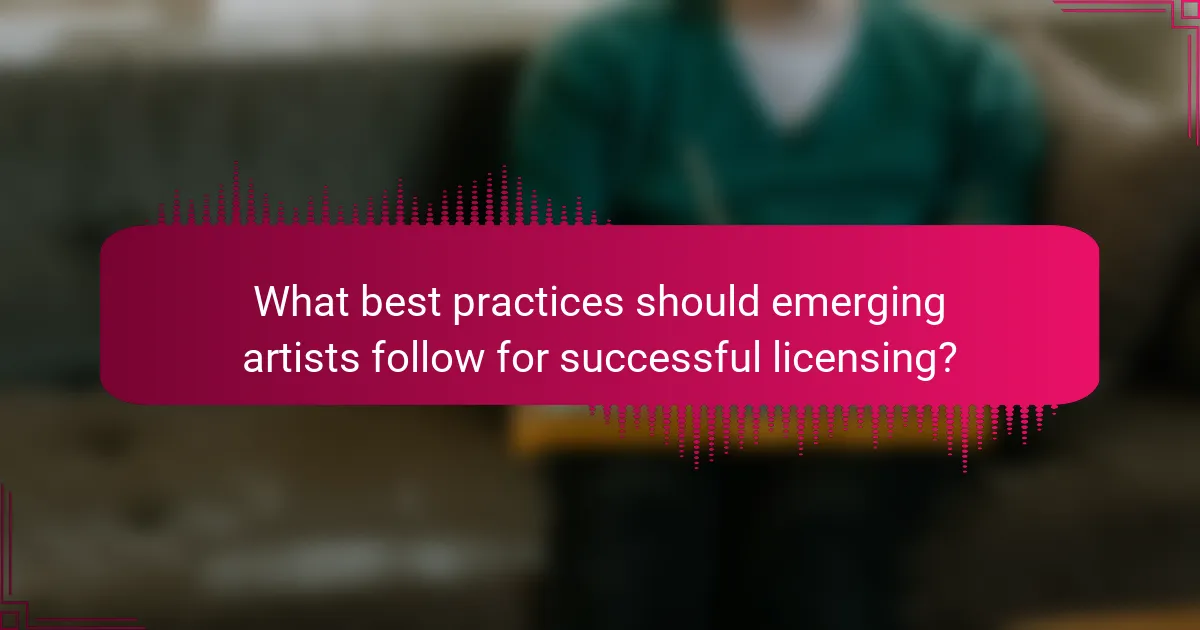
What best practices should emerging artists follow for successful licensing?
Emerging artists should focus on building relationships, understanding licensing types, and promoting their music effectively. Networking with industry professionals enhances visibility. Familiarizing themselves with sync licensing, mechanical royalties, and performance rights can maximize revenue potential. Creating a strong online presence through social media and music platforms attracts opportunities. Regularly updating their portfolio and being open to collaboration can lead to diverse licensing deals.
How can artists effectively promote their music for licensing opportunities?
Artists can effectively promote their music for licensing opportunities by leveraging digital platforms, networking, and showcasing their work. Utilizing platforms like SoundCloud and Spotify increases visibility. Engaging with music supervisors and attending industry events fosters connections. Creating a professional portfolio highlights unique attributes, enhancing appeal to potential licensors. Regularly updating social media with new releases can attract attention and lead to revenue opportunities.
What strategies enhance negotiation outcomes for licensing deals?
Effective strategies for enhancing negotiation outcomes in licensing deals include thorough preparation, clear communication, and establishing mutual benefits. Understanding the market value of music helps emerging artists set realistic expectations. Building relationships with potential partners fosters trust and collaboration. Utilizing data on revenue potential from various licensing types, such as sync licensing or streaming, can strengthen negotiation positions. Finally, being open to flexible terms can lead to more favorable agreements.
How can collaboration with other artists boost licensing potential?
Collaboration with other artists can significantly enhance licensing potential by expanding reach and audience engagement. Joint projects often attract diverse fan bases, increasing exposure. For example, a song featuring multiple artists may be licensed for various media, leading to higher revenue streams. Additionally, collaborations can blend unique styles, creating distinctive sounds that appeal to broader markets. This synergy can result in more licensing opportunities across platforms such as film, television, and advertising.
